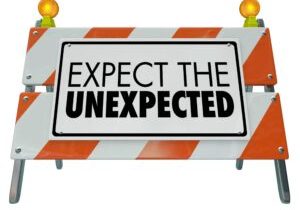
So, this one’s been coming for a while. And it’s not the kind of blog post you’ve been accustomed to reading.
Today, I’m sharing news about me. And while a number of posts I write include some “real life” moments here and there, memories from my programming days or Jacobs Media stories over the decades, I tend to shy away from intensely personal news as that is not what JacoBLOG is all about nor is it in my comfort zone.
However, today’s the exception. I’ve been walking around with a secret that actually isn’t all that mysterious to those I know and interact with. It’s health news, and I realize that on the surface, that sounds scary. But in my case, things are going quite well overall, and I feel compelled to share the news with you.
A couple years ago, I was diagnosed with Parkinson’s disease. You may not be that familiar with it (in fact, I wasn’t until I was told I have it). It’s become more common in recent years as a number of famous folks are in this “club,” including Ozzy Osbourne, Muhammed Ali, Alan Alda, Brett Favre, and Billy Graham. Perhaps the most publicized case is Michael J. Fox who tragically got his bad news at age 29. His version of Parkinson’s is quite a bit different than mine. You might also know he has a well-known foundation named after him, working hard to find a cure.
On the Detroit front, former Detroit Tiger (and LA Dodger) star, Kirk Gibson, has also been dealing with “Parky” as he calls it. Later this year, he’s cutting the ribbon on “Kirk Gibson’s Center for Parkinson’s Wellness” in metro Detroit.
Back to me, I noticed a tremor in my left forefinger back in 2017, and my physician sent me to a neurologist. He tested me, and concluded I didn’t have it—at least then.
A few years later, the tremor became more noticeable, and again, I went to the same neurologist. This time around, my result was borderline. A few months later, he was more sure of my situation, declaring me a 70 year-old with Parkinson’s.
One of the weird things about this disease is there’s no definitive test—like a blood draw or MRI—to absolutely inform you whether or not you have it. Instead, they put you through a whole battery of tests—walking briskly, touching fingers to your nose, eye/hand coordination stuff.
Since being diagnosed, I’ve been on the standard PD meds, and I can say it’s working pretty well. Sometimes the drugs seem to work well, while at other times, its impact seems negligible.
Except the tremor. If I’m stressed or keyed up (like before a speech), the shaking can be worse. And while I can carry heavier objects like my backpack in my left hand with no problem and I can even shave, even a simple task of carrying a cup of coffee in my left hand is a challenge. Oh, did I mention I’m lefthanded?
So I’ve spent the last couple years trying to hide the tremor. Some attempts have been better than others, but many of you have noticed and asked me (or Paul) what’s going on. And I always tell whoever asks why my hand shakes. But to the larger population in the industry, I’ve attempted to keep it quiet.
Until now.
It has taken a lot of effort and focus to keep that left hand under wraps and relatively calm. When I’m on stage, it’s often in my left pocket, mic in the right hand. (A lavalier mic is always a plus.) But I talk with my hands, so that left hand always seems to make an appearance especially when the adrenalin starts flowing.
Trying to hide it has diverted my focus to the tremor and away from my speech, presentation, or meeting. And I’ve reached the conclusion that by telling you about it, neither of us will spend much time thinking about it. At least, that’s the goal.
The events that led me to making this decision were Morning Show Boot Camp a couple weeks ago, and the Public Media Content Conference happening right now in Salt Lake City. I’ll be unveiling the key findings of our 17th annual Public Radio Techsurvey to public radio managers Thursday morning, and frankly, I want my concentration on making this data talk, and helping public stations cope with the quantum changes impacting their community at this time. Suffice it to say, public media is at an inflection point. While PRTS may not solve the problems of the world, I believe it can help them better understand how the playing field is changing, and where to go from here. I want to be on my game.
At Boot Camp, I was chatting with Don Anthony about an hour before my panel. As he already knew about my Parkinson’s adventure, I was sharing with him that I was feeling more conspicuous about the tremor lately. And he looked me in the eye and said, “Don’t think about it. People are in the room to see you and hear what you have to say. They don’t care that your hand shakes.”
So, that’s it. I appreciate your support and friendship over the years, and especially to those who frequently read my writing here. I have always valued my radio family.
And I’ve got a strong support system here at home, thanks especially to Paul, and my team at Jacobs Media. And of course, my wife, Debra, and our kids. I’m lucky to have these people around me, helping me keep it all in perspective.
If I manage this beast well. and maybe get a little lucky, I think I’ve got a number of solid years ahead where I’ll be able to continue making a contribution at a performance level that meets my standards. Over the last two years, I’ve made numerous market visits, speeches and presentations, and conducted many focus groups and research presentations. I’m not planning on that changing.
But who the hell knows, right?
Thanks for reading this. Everyone has something—or will at some point. So in that context, there’s nothing really special going on here. This was just my moment to get some tough news, because it comes to all of us sooner or later.
When I first got the news, it was a stunner. And after a period of denial, I do what I do.
There are hours that go by where I don’t even think about it. So I’m putting it out there in the hope you don’t think about it much either.
Life goes on.
Originally published by Jacobs Media








